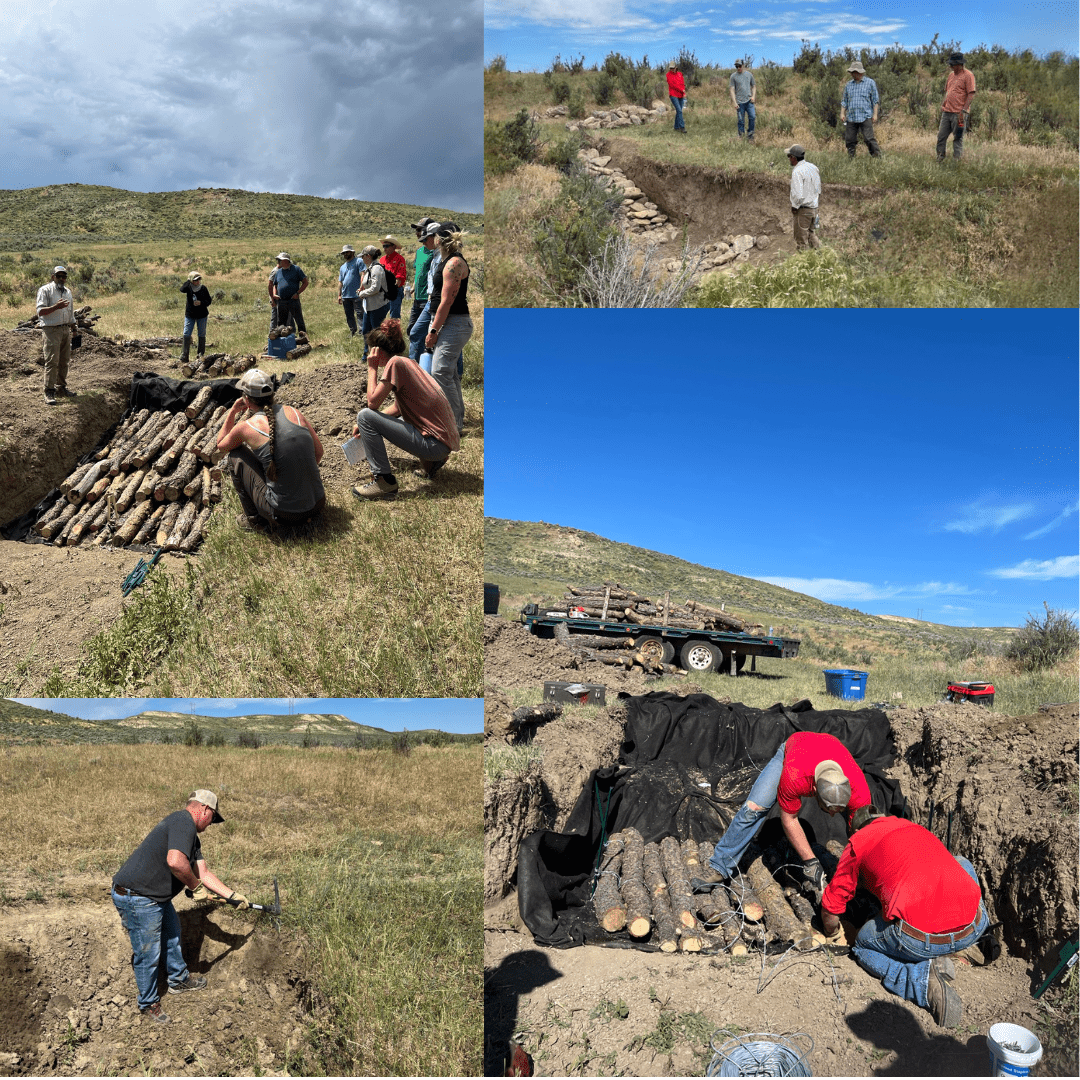“Watch out for snakes.” This was the greeting we received as we pulled our convoy into a distant stretch of prairie under a sunny sky in eastern Wyoming. We were in a place where the skies and grasslands were vast, with a herd of cattle contentedly grazing on the low hillsides.
The fact that we were in a place with no cell phone reception was fitting with the purpose of our visit to the grasslands. With shovels and pickaxes over our shoulders, we proceeded single file to an area of low wetlands where we began the discussion of low-tech mesic restoration. Our mission was to restore the ecological function of the wet meadow area by installing Zeedyk structures, treatments to halt head-cutting and build soils back from where they had been washed away. Logs were cut and rocks were piled and ready for us to begin construction.
Head-cutting is a process where water running into wetlands eventually creates channels, which continually erode away soils and interrupt the natural flow of water dispersion into a mesic area. Channeling can start in a variety of ways, from cattle compacting soils on a trail, to the construction of roads. Interestingly, channelization in these areas started long before barbed wire and cattle dotted the landscape. Paul Jones of Tomichi Creek Ecosystems Services, explains; “as pioneers moved west in the 19th century, they had many rivers and creeks to cross. The natural inclination was to cross their wagons on areas that were narrow or shallow, and other wagons crossed their trail. This eventually obstructed the flow of water forcing it to find a new path to their wetland destinations. As the new channel flowed into the wetland, it began to cut the bank back, and this process has continued ever since.” With a multitude of forces acting upon the land, deep erosion cuts and channeling is common on the rangelands.
To quote Mike Rowe of Dirty Jobs, “now it’s time to get dirty.” We took turns shoveling and picking away at the back of the cut to create a smooth 45-degree angle from top to bottom where we could pile stones and logs. Thankfully, most of the hard work had occurred the previous day via a backhoe, but we still worked up a sweat smoothing things out. Below the slope, we stacked rocks in the bowl that was cut (i.e. a Zuni bowl) to act as a catch basin for water falling over the slope. Over time, this area begins to build soil from sediment falling out of the now-slowed flowing water, with the goal of restoring the ecological function of the wet meadow area.
It was amazing to see how simple the construction was, albeit labor intensive with stacking rocks and logs. This application is a low-cost option for landowners to create a sustainable water supply for livestock while once again providing habitat and resources to wildlife.
The next day, we shared the heat and digging with interested participants in the Low-tech Mesic Habitat Restoration Workshop hosted by the Clear Creek Conservation District in Buffalo, Wyoming. Jones led a classroom presentation discussing different forms for Zeedyk structures and the benefits of low-tech restoration structures. Participants then toured the area where structures were built the day before and were able to get their hands dirty by creating their own. Towards the end of the class, many participants had ideas for where to use these structures to help habitat and land restoration. Additional classes are being held in different locations at future dates (e.g., see LTPBR Workshop and Field Day in Winnett, MT). Stay tuned for other training dates.

